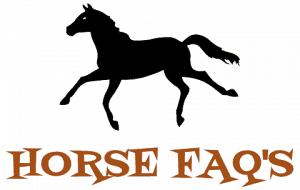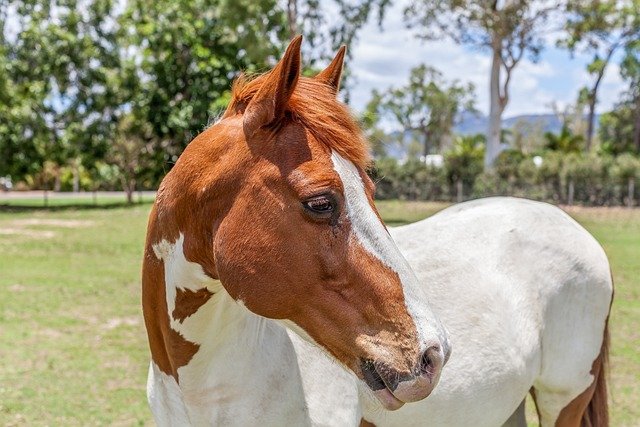Horse breeds come in a wide range of coat colors and patterns, which can make identifying specific breeds and bloodlines a daunting task. One of the most common patterns is patchy coats, which can be referred to as pinto, paint, piebald, and skewbald. While these terms are often used interchangeably, there are differences between them that can help in identifying specific breeds and bloodlines.
Piebald horses have large, non-uniform patches of black or white on their coats, while skewbald horses have a coat of white and any other color. Pinto is a term used to describe any horse with paint markings, and the American Paint Horse is a specific breed with patterned coats.
Understanding the differences between these terms can provide insight into the world of horse breeding, as well as the significance of coat coloration in different breeds. In this article, we will explore the various coat descriptions, breeds and bloodlines, and registry differences associated with these patchy horse coats to provide a comprehensive guide for horse enthusiasts and breeders alike.
Piebald and Skewbald Horses:
– These terms describe horses with non-uniform patches of black and white (piebald) or white and any other color (skewbald).
– These markings come from genetics and code for tobiano, overo, or tovero coat marking types.
– Skewbald horses have similar white patches to piebald horses, but their base coat can be chestnut, bay, palomino, or any other color.
Pinto Horses:
– Refers to a horse with any typically large white areas regardless of breed or color.
– Can be broken down into pattern types like tobiano, overo, and tovero.
– Can only be one or the other exclusively but piebalds and skewbalds are both pintos.
– Pintos are commonly found in breeds such as the American Saddlebred, Gypsy Horse, and Miniature Horse.
– Pinto horse registries include the Pinto Horse Association of America and the National Pinto Horse Registry.
Paint Horses:
– Paint Horse is a specific breed with patterned coats and western stock in their bloodlines.
– Have colored coats and a specific bloodline with American and Western genetics.
– Must have bloodlines restricted to quarter horses, thoroughbreds, or other American paint horses.
– The paint horse has only one registry, and the categorizations are based on coat appearance and pedigree.
– Paints refer to splashed coats with certain breed bloodlines, while pinto refers to any horse with paint markings.
– Paint horses are breed-specific, while pinto is determined by coat coloring alone, regardless of breed.
– APHA-registered horses that do not outwardly display a pinto coat may still be registered since they possess the genetic makeup.
Coat Descriptions
Coat descriptions are a significant aspect in identifying the different types of horses with patchy coats, including pintos, paint horses, skewbalds, and piebalds, which vary in their coat patterns and bloodlines.
Piebald horses have large, non-uniform patches of black or white on their coats, while skewbald horses have coats of white and any other color. Skewbald horses have solid colors other than black with white patches. Skewbald horses can be broken down by pattern type, including tobiano, overo, and tovero.
The tobiano markings are recognizable as large white spots with rounded edges found on both the body and legs of a horse. The overo pattern encompasses a few patterns and usually does not cross over the horse’s back between the withers and the tail. The tovero pattern is a mix of the tobiano and overo patterns and tends to have a high majority of white markings with very little darker coloration by comparison.
Color genetics play a role in determining the coat patterns of horses, and cultural significance has led to the development of specific breeds such as the American Paint Horse. Paint horses are specifically pintos with western stock in their bloodlines. The American Paint Horse is a specific breed with patterned coats, while pinto, piebald, and skewbald describe coat markings only and are not specific registered breeds.
The American Paint Horse Association strictly states that they must have bloodlines restricted to quarter horses, thoroughbreds, or other American paint horses. The Pinto Horse Association of America and the National Pinto Horse Registry categorize pintos based on their conformation and breeding. Pintos can only be one or the other exclusively, and the pinto registry does not recognize or register mini horses or draft horses.
Breeds and Bloodlines
The pedigree and breeding of a horse are crucial factors in determining its specific breed, as well as its physical characteristics and traits that are passed down through generations.
The American Paint Horse Association has strict breeding restrictions, only allowing quarter horses, thoroughbreds, or other American Paint Horses to be registered as Paints. This restriction ensures that the breed maintains its distinct physical characteristics and traits, such as the tobiano and overo coat patterns.
However, there is concern among some in the equine community that these breeding restrictions may limit the genetic diversity of the breed. It is important to balance maintaining the breed’s distinct characteristics with promoting genetic diversity for the overall health and well-being of the horses.
The Pinto Horse Association of America, on the other hand, categorizes pintos based on conformation and appearance of the coat, without restrictions on breeding. This allows for a wider range of genetic diversity in the breed, but also means that the physical characteristics and traits of the breed may vary more widely.
Registry Differences
One notable difference between the registries of the American Paint Horse Association and the Pinto Horse Association of America is their approach to breeding restrictions, which can be compared to the difference between a closed ecosystem and an open ecosystem in nature. The American Paint Horse Association strictly states that registered horses must have bloodlines restricted to quarter horses, thoroughbreds, or other American paint horses. This breeding restriction aims to maintain the distinct traits and coat patterns that are specific to the American Paint Horse breed.
On the other hand, the Pinto Horse Association of America categorizes pintos based on their conformation and breeding, but they do not impose the same strict breeding restrictions as the American Paint Horse Association. The Pinto Horse Association of America’s registration requirements are more open, accepting horses with various breeds in their bloodlines as long as they exhibit the appropriate coat markings. This approach allows for more genetic diversity within the pinto breed, but it also means that the coat patterns and traits of pintos can be more varied than those of the American Paint Horse breed.
| Registry | Breeding Restrictions | Coat Markings Recognized | ||
|---|---|---|---|---|
| American Paint Horse Association | Bloodlines restricted to quarter horses, thoroughbreds, and other American paint horses | Tobiano, overo, and tovero | ||
| Pinto Horse Association of America | Open to various breeds in bloodlines | Tobiano, overo, sabino, splashed white, and frame overo | Both organizations promote the breeding, exhibition, and preservation of their respective types of pinto-patterned horses. |
Frequently Asked Questions
What are some common misconceptions about patchy coat horses?
Common misconceptions about patchy coat horses include the belief that they are a separate breed and that their coat patterns indicate a specific genetic variation. However, coat color and pattern are not indicative of breeding patterns or genetic variations within a particular breed.
Are there any health concerns specific to patchy coat horses?
The prevalence of patchy coat horses varies among different breeds, and the genetic basis of patchy coat patterns is complex. There are no specific health concerns associated with patchy coat horses, but breeders may select for certain coat patterns.
How do patchy coat horses behave compared to solid color horses?
When comparing patchy coat horses to solid color horses, behavior differences may not necessarily be linked to their coat color. However, training challenges may arise due to individual temperament and previous experiences.
Are there any cultural or historical significance to patchy coat horses?
The patchy coat of horses has had cultural and historical significance, with symbolism in art and a role in folklore. The genetics of patchy coats and breeding practices have also been studied to understand their inheritance and origin.
How do patchy coat horses fare in different climates and environments?
Patchy coat horses have varying adaptability challenges depending on their breeding preferences. Some breeds with thicker coats may struggle in warmer climates, while others may be better suited. Further research is needed to fully understand the effects of climate on patchy coat horses.

